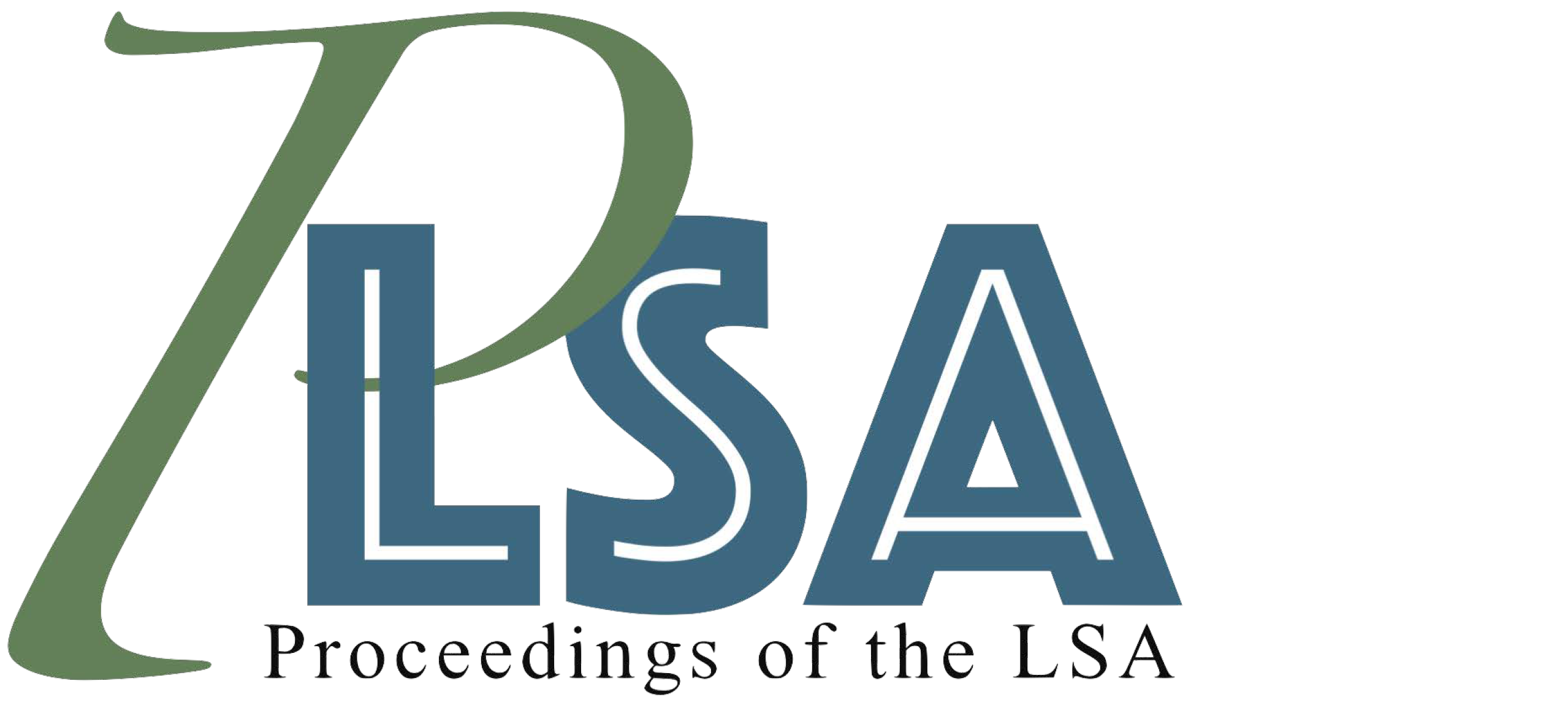Finding ‘language’ in the Hebrew Bible
DOI:
https://doi.org/10.3765/plsa.v10i1.5877Keywords:
language, Biblical exegesis, historical change in meaningAbstract
In the Hebrew Bible, lashon [לָשׁוֹן] and safah [שָׂפָה] are both translated as ‘language’. In Genesis 10, survivors of the flood went their separate ways each according to their lashon. In Chapter 11, the builders of the Tower of Babel all spoke the same safah. Focusing on lashon, it changes radically over the Biblical millennium. From ~1400 BCE, lashon describes ways in which individuals speak. By 550-450 BCE, it was synonymous with ‘nation’ or ‘people’ and used in a manner more familiar to us today.
Downloads
Published
2025-04-09
Issue
Section
Articles
License
Copyright (c) 2025 Stanley Dubinsky

This work is licensed under a Creative Commons Attribution 4.0 International License.
Published by the LSA with permission of the author(s) under a CC BY 4.0 license.
How to Cite
Dubinsky, Stanley. 2025. “Finding ‘language’ in the Hebrew Bible”. Proceedings of the Linguistic Society of America 10 (1): 5877. https://doi.org/10.3765/plsa.v10i1.5877.
